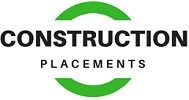Last Updated on December 18, 2024 by Admin
Mechanical engineering is one of the most versatile branches of engineering, covering a wide range of topics such as thermodynamics, fluid mechanics, heat transfer, and machine design. For students, competitive exams, and professionals preparing for interviews, objective-type questions are crucial in testing conceptual clarity and technical knowledge. This article compiles an extensive list of objective-type questions for mechanical engineering, categorized into key topics, and enriched with the latest trends and updated data. Additionally, we’ll share tips on how to prepare effectively using these questions and credible online resources.
Table of Contents
Why Are Objective Type Questions Important?
- Efficient Assessment: Objective-type questions help evaluate knowledge in a precise and time-efficient manner.
- Conceptual Understanding: They encourage critical thinking and a deeper understanding of concepts.
- Preparation for Competitive Exams: Exams like GATE, IES, and PSU recruitment often feature objective-type questions as a significant part of their syllabus.
- Interviews: Employers frequently ask objective questions to test technical skills during recruitment.
Latest Trends in Objective Questions for Mechanical Engineering
- Application-Based Questions: The trend has shifted from rote memorization to application-oriented problems.
- Incorporation of Modern Technologies: Questions now include topics such as 3D printing, automation, and Industry 4.0.
- Higher Emphasis on Data Interpretation: Questions often involve graphs, charts, and real-world data analysis.
- Eco-Friendly Solutions: Sustainability and green technologies are being incorporated into questions.
Key Categories of Objective-Type Questions
1. Thermodynamics
Thermodynamics forms the backbone of mechanical engineering. It is widely covered in competitive exams and job interviews.
Sample Questions:
1. The first law of thermodynamics is a statement of:
(a) Conservation of energy
(b) Conservation of mass
(c) Conservation of momentum
(d) None of these
Answer: (a)
2. Which process does not involve heat transfer?
(a) Isobaric
(b) Isochoric
(c) Isothermal
(d) Adiabatic
Answer: (d)
3. In a Carnot engine, the efficiency depends on:
(a) Working substance
(b) Temperatures of source and sink
(c) Pressure of the working fluid
(d) Volume of the working fluid,
Answer: (b)
4. An isothermal process occurs at constant:
(a) Pressure
(b) Volume
(c) Temperature
(d) Energy
Answer: (c)
5. The unit of entropy is:
(a) Joule
(b) Joule/K
(c) Pascal
(d) Kelvin
Answer: (b)
Online Resource: For further reading on thermodynamics, visit NPTEL Thermodynamics.
2. Fluid Mechanics
Understanding the behavior of fluids is crucial for solving real-world engineering problems.
Sample Questions:
6. The continuity equation is based on:
(a) Conservation of mass
(b) Conservation of energy
(c) Conservation of momentum
(d) None of these
Answer: (a)
7. What is the unit of dynamic viscosity?
(a) Pascal-second
(b) Newton-second
(c) Pascal-meter
(d) Newton-meter
Answer: (a)
8. The Reynolds number is a ratio of:
(a) Inertial forces to viscous forces
(b) Pressure forces to inertial forces
(c) Gravitational forces to viscous forces
(d) None of the above
Answer: (a)
9. A Venturi meter is used to measure:
(a) Velocity of fluid
(b) Flow rate of fluid
(c) Pressure of fluid
(d) Density of fluid
Answer: (b)
10. Bernoulli’s equation is applicable to:
(a) Compressible flow
(b) Incompressible flow
(c) Viscous flow
(d) Rotational flow
Answer: (b)
Online Resource: Explore fluid mechanics basics at MIT OpenCourseWare.
3. Strength of Materials
This topic is essential for understanding stress, strain, and mechanical properties.
Sample Questions:
11. Poisson’s ratio is the ratio of:
(a) Lateral strain to longitudinal strain
(b) Longitudinal strain to lateral strain
(c) Shear strain to lateral strain
(d) None of these
Answer: (a)
12. The bending moment at a fixed support is:
(a) Maximum
(b) Minimum
(c) Zero
(d) Constant
Answer: (a)
13. Modulus of elasticity is defined as:
(a) Stress/Strain
(b) Strain/Stress
(c) Stress × Strain
(d) Strain/Modulus
Answer: (a)
14. Shear force is maximum where bending moment is:
(a) Zero
(b) Maximum
(c) Minimum
(d) Constant
Answer: (a)
15. A material is said to be ductile if it:
(a) Can withstand large strains before failure
(b) Breaks without much deformation
(c) Resists deformation
(d) Is strong in tension
Answer: (a)
Online Resource: Learn more about material strength from Coursera Material Science Courses.
4. Heat Transfer
Mastery of heat transfer principles is critical for energy systems and thermal analysis.
Sample Questions:
16. Heat transfer in fluids occurs mainly by:
(a) Conduction
(b) Convection
(c) Radiation
(d) None of these
Answer: (b)
17. The unit of thermal conductivity is:
(a) W/m·K
(b) W/m·C
(c) W/m·s
(d) None of these
Answer: (a)
18. Stefan-Boltzmann law applies to:
(a) Black body radiation
(b) Conduction
(c) Convection
(d) None of these
Answer: (a)
19. Fourier’s law is used in:
(a) Conduction
(b) Convection
(c) Radiation
(d) All of the above
Answer: (a)
20. Nusselt number is used in:
(a) Conduction
(b) Convection
(c) Radiation
(d) None of these
Answer: (b)
Online Resource: For advanced topics, visit Thermal Engineering Basics.
5. Machine Design
Design principles and mechanical elements are integral to engineering solutions.
Sample Questions:
21. A shaft is designed on the basis of:
(a) Torsional rigidity
(b) Bending rigidity
(c) Lateral rigidity
(d) None of these
Answer: (a)
22. The standard taper used for machine tools is:
(a) 1:10
(b) 1:20
(c) 1:50
(d) 1:100
Answer: (b)
23. Key used in shaft couplings is generally:
(a) Taper key
(b) Sunk key
(c) Round key
(d) None of these
Answer: (b)
24. Hertz stress is used in:
(a) Gears
(b) Bearings
(c) Shafts
(d) Springs
Answer: (a)
25. Factor of safety is the ratio of:
(a) Ultimate stress to working stress
(b) Working stress to ultimate stress
(c) Strain to stress
(d) None of these
Answer: (a)
Tips to Prepare for Objective Questions
- Understand Concepts: Focus on understanding basic principles instead of memorization.
- Solve Previous Papers: Practice questions from past exams like GATE, ESE, and PSUs.
- Use Online Resources: Utilize platforms like Coursera, EdX, and NPTEL.
- Join Study Groups: Engage in discussions to clarify doubts and learn collaboratively.
- Time Management: Practice solving questions quickly to improve speed and accuracy.
Conclusion
Objective-type questions for mechanical engineering are indispensable tools for enhancing knowledge and preparing for exams and interviews. Students and professionals can achieve a competitive edge by focusing on key topics such as thermodynamics, fluid mechanics, and machine design and leveraging credible resources. Start your preparation today using the questions and tips outlined in this article, and stay updated with the latest trends for a successful career in mechanical engineering.
Related Posts:
- Textbooks and Reference Books on Fluid Mechanics
- Top 50 Piping Engineer Interview Questions and Answers
- The Importance of Project Planning Objectives: A Comprehensive Guide
- Ratings and Guidance for the Job Readiness MCQ Test for Civil Engineering Graduates


